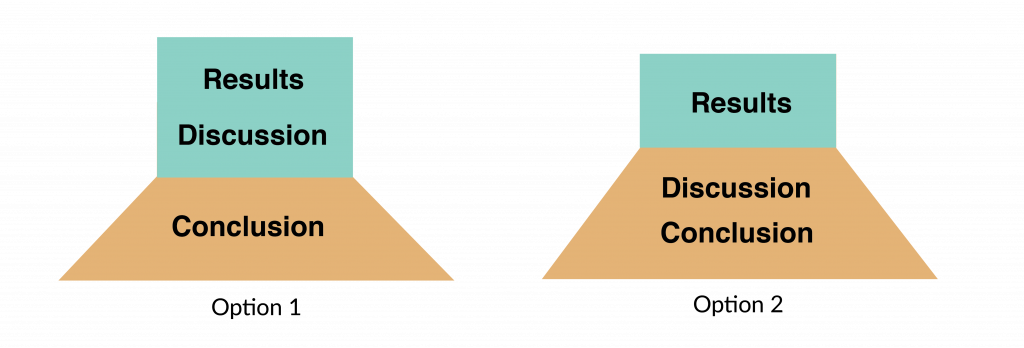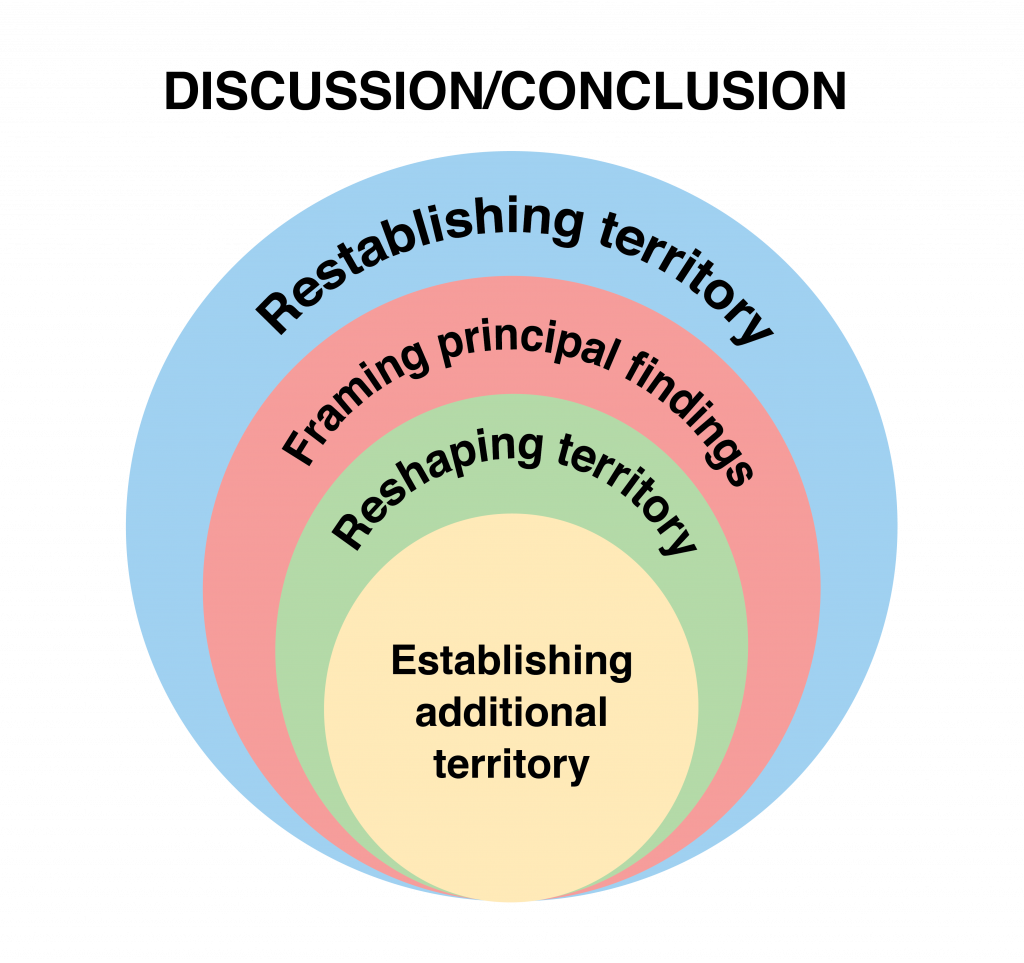Chapter 6: Discussion/Conclusion Section(s)
Goals of an Effective Discussion/Conclusion Section

Sometimes the research itself (the topic/content) drives a writer’s decision to adopt one structural pattern or the other. Moreover, there are times when the discipline or the journal tends toward one or the other. It’s your job as a writer/researcher to know which option is the best by taking into account all of the stakeholders as well as your own style preferences. This chapter will help you think through some of those issues.
The main point of this chapter is to understand the five objectives of the final section of a research article. The following is a list of the goals for finalizing your article:
- Re-establish the territory
- Frame the principal findings
- Reshape the territory
- Establish additional territory

You’ll notice that the names of these goals are familiar because they echo the names of the goals in other parts of a manuscript. Given that review is a primary focus of the final section of a paper, it makes sense that there would be some overlap in the naming of these goals. Wallwork (2016) notes that many novice researchers find the Discussion section to be the most challenging section to write. The key to overcoming this is to learn what goals successful writers use when composing this section. Wallwork (2016, p. 311) also gives two other general pieces of advice:
- be “positive about your own limitations, and constructive when discussing what you believe to be the limitations of others.”
- “… interpret your results without repeating them.”
The Academic Phrasebank website also notes that many writers find the final section of their manuscript to be the most difficult to write because of their complexity and the need to use cautious language. Throughout this chapter, we’ll refer to the complex nature of this ultimate part of the research article, and give you some language suggestions to help you get started implementing the strategies you need to reach the goals.

